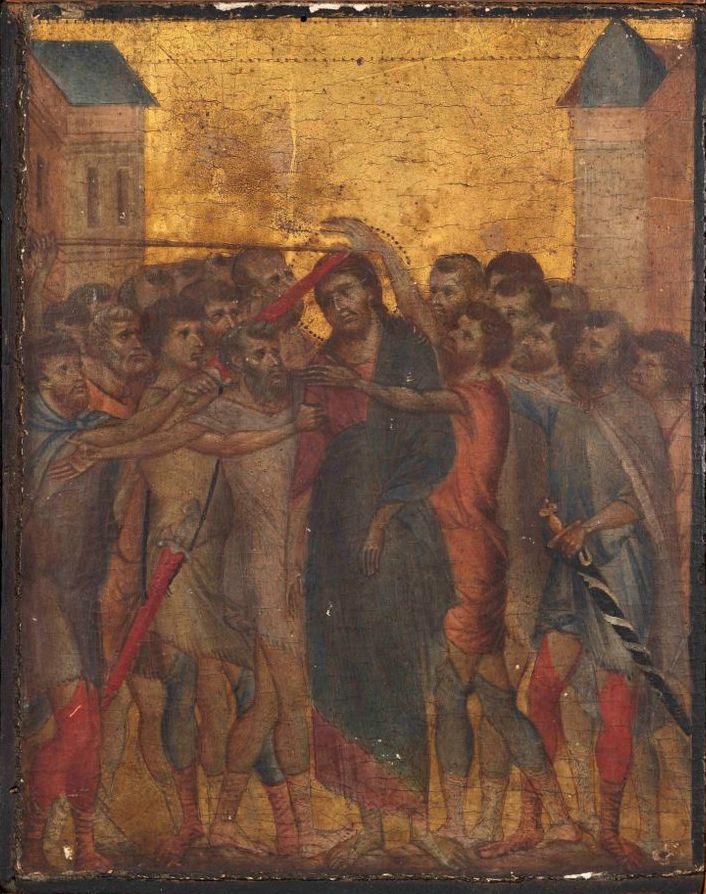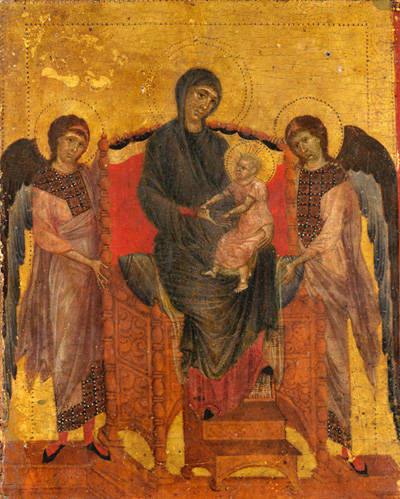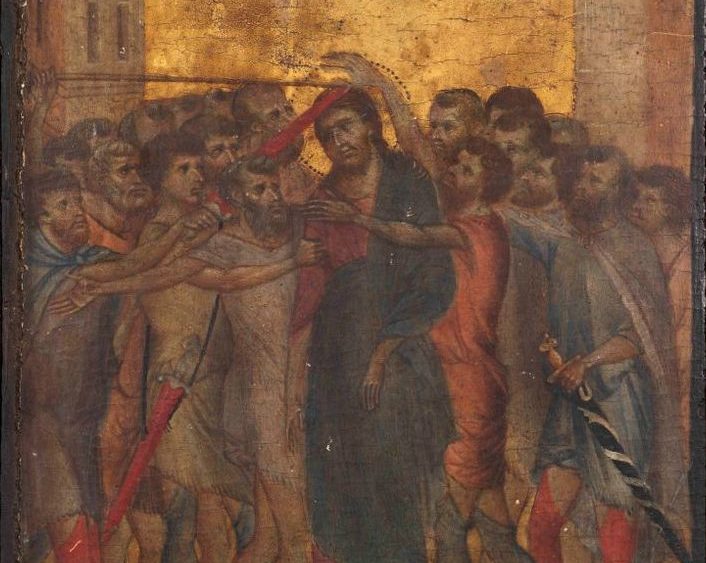'Christ Mocked' painting sells for AU$39 million
After decades spent hanging above a kitchen stove
An artwork depicting Christ being mocked has fetched a huge €24m (AU $39 million) at auction over the weekend, after spending decades hanging over the hotplate in a French kitchen.
The painting is by pre-Renaissance artist Cimabue and dates to 1280. It narrowly escaped the local dump when its 90-year-old owner began clearing out her family home in Compiegne, northeast of Paris.
Thankfully, the elderly owner contacted an expert at an auctioneers in Senlis to assess whether any of the home’s contents, furniture and furnishings could be sold.
“I had a week to give an expert view on the house contents and empty it,” Philomène Wolf of Senlis told Le Parisien newspaper. “I had to make room in my schedule … if I didn’t, then everything was due to go to the dump.”
Ms Wolf says she knew it was a piece of rare quality as soon as she saw it.
“I immediately thought it was the work of a primitive Italian painter. But I did not imagine it was Cimabue!”

Christ Mocked by Cimabue, painting found in northern France Cimabue [Public domain]
The owner then sought an appraisal from auctioneers at Acteon who found the tiny work – measuring just 20 by 26cm – to be in excellent shape, albeit covered in grime from having been hung right above a cooking hotplate.
“The style, the ornamentation of the gold background, the matchings of the backs of the panels and the overall conditions of the three confirms that they were part of the left side of the same diptych,” Acteon said.
Stephane Pinta, an art specialist with the Turquin (who specialise in Old Master artworks), pointed to likenesses in facial expressions and buildings, as well as the painter’s techniques for conveying light and distance.
The team of art experts at the Turquin in Paris also used infrared reflectography to confirm that Christ Mocked was part of a bigger polyptych – a larger work of painted scenes divided into several panels – depicting scenes from Christ’s passion and crucifixion. Two other scenes from the polyptych – The Virgin and Child with Two Angels and The Flagellation of Christ – currently hang in the National Gallery in London and the Frick Collection in New York house.
Christ Mocked work was bought by the London-based dealer Fabrizio Moretti against competition from at least six other bidders, including a foreign museum. The price is believed to be the highest for a European old master painting at auction since Leonardo’s “Salvator Mundi” sold for a record-shattering $450.3 million at Christie’s in 2017.

The Virgin and Child with Two Angels
Cimabue, a 13th century Florentine painter and mosaicist, was born Bencivieni di Pepo in 1240. He is remembered as the last of the great Italian artists in the Byzantine style, or alternatively, as the forefather of the Italian renaissance. He is recognised as having broken away from the popular style of his time and incorporating new elements into his work that brought a naturalness to the movement in his paintings.
Cimabue is also credited with influencing and likely teaching both the Italian master Giotto and Duccio, both of whose fame superseded within his own in his lifetime. The great poet Dante, a contemporary of Cimabue, described as much in Canto XI of his Purgatario:
O vanity of human powers,
how briefly lasts the crowning green of glory,
unless an age of darkness follows!
In painting Cimabue thought he held the field
but now it’s Giotto has the cry,
so that the other’s fame is dimmed.
Like most of Cimabue’s contemporaries, his work was generally concerned with Christian themes. His surviving works include the frescoes of New Testament scenes in the upper church of S. Francesco, Assisi; the Sta. Trinità Madonna (c. 1290); and the Madonna Enthroned with St. Francis (c. 1290–95).
An anonymous commentator in a work on Dante written in 1333–34 reportedly described Cimabue as so proud and demanding that if others found fault with his work – or even if he himself did – he would destroy the work, no matter how valuable it was.
Given that Christ Mocked has survived, we can assume Cimabue was satisfied with his efforts in this work. Others clearly concur.
Email This Story
Why not send this to a friend?



